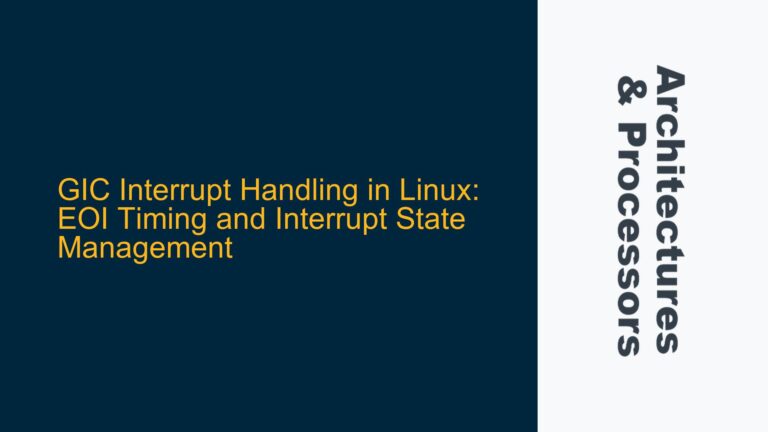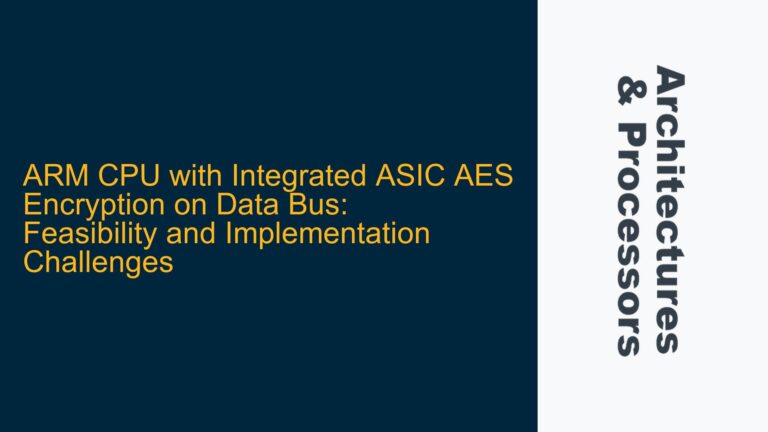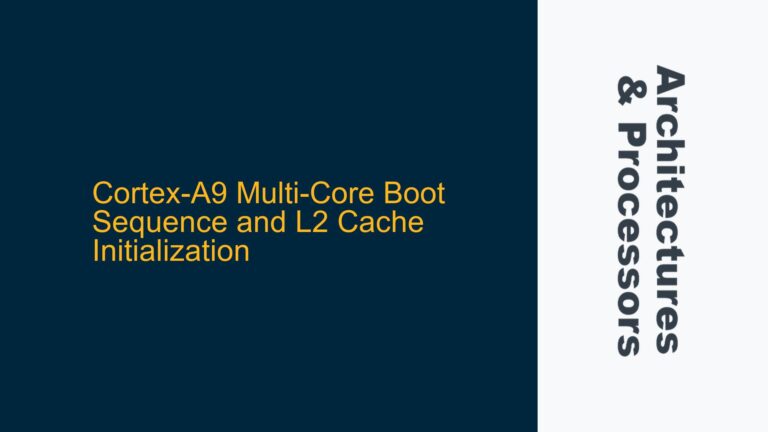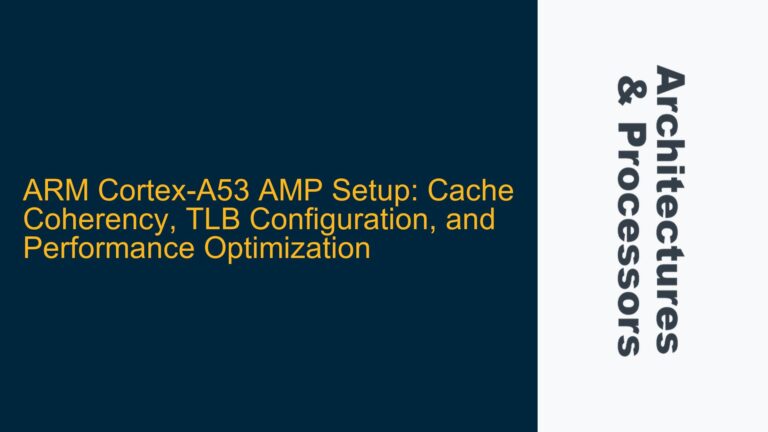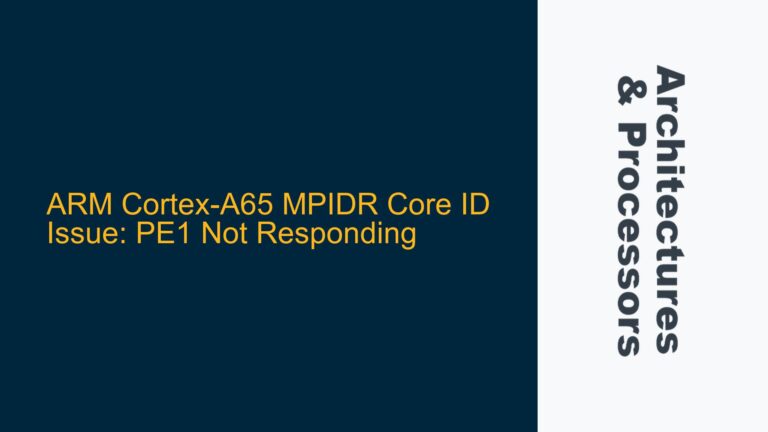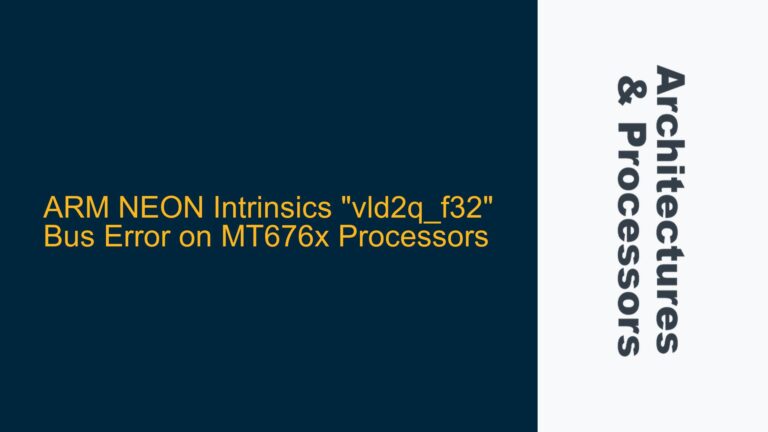Cortex-A53 FIQ Exception During Bare Metal Boot in init_libc
When booting a Cortex-A53 processor in bare metal mode, a Fast Interrupt Request (FIQ) exception can occur during the execution of the init_libc function. This issue is particularly prevalent when using the GCC Linaro 4.9 toolchain with glibc 2.14. The FIQ exception is triggered unexpectedly, leading to a system crash or test failure. The root cause of this issue is often related to improper initialization of system components, particularly the cache, before executing certain library functions.
The Cortex-A53 processor, being a 64-bit ARMv8-A architecture core, requires careful setup of its system registers, exception handling mechanisms, and memory subsystems during bare metal boot. The FIQ exception is a high-priority interrupt that can be triggered by various hardware or software conditions, including invalid cache operations or unhandled system states. In this specific case, the FIQ exception is linked to the dc zva (Data Cache Zero by VA) instruction, which is used by the init_libc function to initialize memory regions.
The dc zva instruction requires the data cache to be enabled and properly configured. If the cache is disabled or misconfigured, executing this instruction can lead to an FIQ exception. This is because the Cortex-A53 processor expects the cache to be operational when performing cache-related operations. Without proper cache initialization, the processor enters an undefined state, triggering the FIQ exception as a fallback mechanism.
Cache Disabling and dc zva Instruction Misuse
The primary cause of the FIQ exception during bare metal boot on the Cortex-A53 is the execution of the dc zva instruction without enabling the cache. The dc zva instruction is used to zero a block of memory using the cache, which is a common operation during library initialization. However, if the cache is disabled, the processor cannot perform this operation, leading to an exception.
The Cortex-A53 processor has multiple levels of cache (L1 and L2), and these caches must be enabled and configured before any cache-related instructions are executed. The cache is controlled through the System Control Register (SCTLR), which includes bits for enabling the instruction cache (I), data cache (C), and other memory system features. If these bits are not set correctly, the cache remains disabled, and any attempt to use cache-related instructions will result in an exception.
Another potential cause is the improper initialization of the Vector Base Address Register (VBAR). The VBAR is used to define the base address of the exception vector table, which contains the entry points for handling exceptions such as FIQs. If the VBAR is not set correctly, the processor may not be able to handle the FIQ exception properly, leading to a system crash.
Additionally, the Secure Configuration Register (SCR) must be configured to allow FIQs to be taken at the appropriate exception level (EL3 in this case). If the SCR is not set correctly, the processor may not be able to handle FIQs, leading to undefined behavior.
Enabling Cache and Configuring System Registers for Stable Boot
To resolve the FIQ exception issue during bare metal boot on the Cortex-A53, the cache must be enabled before executing the init_libc function. This involves setting the appropriate bits in the SCTLR to enable the data and instruction caches. The following steps outline the process:
-
Enable the Data and Instruction Caches: The SCTLR must be configured to enable the data cache (C bit) and instruction cache (I bit). This can be done using the following assembly code:
mrs x0, sctlr_el3 orr x0, x0, #(1 << 2) // Enable data cache (C bit) orr x0, x0, #(1 << 12) // Enable instruction cache (I bit) msr sctlr_el3, x0 isb // Ensure the changes take effect -
Configure the Vector Base Address Register (VBAR): The VBAR must be set to the base address of the exception vector table. This ensures that the processor can handle exceptions such as FIQs correctly. The following code demonstrates how to set the VBAR:
adr x1, vector_table msr vbar_el3, x1 isb // Ensure the changes take effect -
Set Up the Secure Configuration Register (SCR): The SCR must be configured to allow FIQs to be taken at EL3. This involves setting the FIQ and IRQ bits in the SCR. The following code demonstrates how to configure the SCR:
mrs x0, scr_el3 orr x0, x0, #(1 << 2) // Enable FIQ orr x0, x0, #(1 << 1) // Enable IRQ msr scr_el3, x0 isb // Ensure the changes take effect -
Initialize the Stack Pointers: The stack pointers for each exception level must be initialized to ensure proper stack usage during exception handling. The following code demonstrates how to initialize the stack pointers:
mov x0, xzr msr sp_el0, x0 msr sp_el1, x0 msr sp_el2, x0 msr sp_el3, x0 isb // Ensure the changes take effect -
Enable Interrupts: Finally, interrupts must be enabled to allow the processor to handle FIQs and other exceptions. This can be done using the
DAIFClrinstruction:msr DAIFClr, #0xF isb // Ensure the changes take effect
By following these steps, the Cortex-A53 processor will be properly configured to handle cache-related operations and exceptions, preventing the FIQ exception during bare metal boot. The init_libc function will then be able to execute the dc zva instruction without triggering an exception, allowing the system to boot successfully.
Detailed Explanation of Cache and Exception Handling in Cortex-A53
To further understand the issue and its resolution, it is important to delve into the details of cache and exception handling in the Cortex-A53 processor.
Cache Architecture in Cortex-A53
The Cortex-A53 processor features a hierarchical cache architecture, with separate L1 instruction and data caches, and a unified L2 cache. The L1 caches are typically 32 KB in size, while the L2 cache can range from 128 KB to 1 MB, depending on the implementation. The caches are controlled through the SCTLR, which provides bits for enabling/disabling the caches, as well as configuring other memory system features.
When the data cache is enabled, the processor can use cache-related instructions such as dc zva to perform operations on the cache. The dc zva instruction is used to zero a block of memory by writing zeros to the cache, which is more efficient than writing zeros directly to memory. However, if the cache is disabled, the processor cannot perform this operation, leading to an exception.
Exception Handling in Cortex-A53
The Cortex-A53 processor uses a vector table to handle exceptions such as FIQs, IRQs, and system calls. The vector table contains the entry points for each exception type, and the base address of the vector table is defined by the VBAR. When an exception occurs, the processor jumps to the corresponding entry in the vector table to handle the exception.
The SCR is used to configure the security state and exception handling behavior of the processor. The FIQ and IRQ bits in the SCR control whether FIQs and IRQs are taken at EL3. If these bits are not set correctly, the processor may not be able to handle FIQs, leading to undefined behavior.
Debugging Tips for Bare Metal Boot Issues
When debugging bare metal boot issues on the Cortex-A53, it is important to verify the following:
- Cache Configuration: Ensure that the data and instruction caches are enabled before executing cache-related instructions.
- Vector Table Setup: Verify that the VBAR is set to the correct base address of the exception vector table.
- SCR Configuration: Check that the FIQ and IRQ bits in the SCR are set correctly to allow exceptions to be taken at the appropriate exception level.
- Stack Initialization: Ensure that the stack pointers for each exception level are initialized correctly to prevent stack corruption during exception handling.
By carefully verifying these aspects, you can identify and resolve issues related to FIQ exceptions and other bare metal boot problems on the Cortex-A53 processor.
Conclusion
The FIQ exception during bare metal boot on the Cortex-A53 processor is a common issue that can be resolved by properly enabling the cache and configuring system registers before executing the init_libc function. By following the steps outlined in this guide, you can ensure that the processor is properly configured to handle cache-related operations and exceptions, allowing the system to boot successfully. Understanding the cache architecture and exception handling mechanisms of the Cortex-A53 processor is key to diagnosing and resolving such issues.

